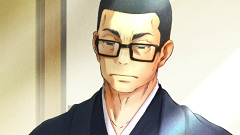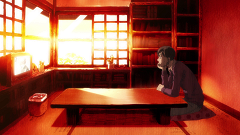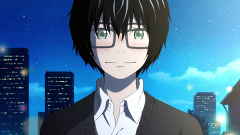When 3-gatsu no Lion first aired in the fall of 2016, there was a heated controversy among manga fans about the appropriateness of Shaft’s adaptation. The show was undeniably faithful to its parent material in terms of story, but its abstract visuals and quirky mood shifts gave it a different flavor than its predecessor. Although Umino-sensei personally requested that Shaft handle the TV series, the decision was met with resistance by part of her fanbase, some of whom swore off the anime completely. Happily, I approached 3-gatsu last year with no prior expectations to weigh me down, and it became one of my favorite series in recent memory, and a virtual lock for my top 10 list in a couple months. Despite my love for the work, I opted not to read the manga during the offseason (a self-imposed restriction I’ll be sure to lift one day), so these blog posts will be written without knowledge of future events. I also want to say a quick thank you to Mario, who has graciously allowed me to continue where his coverage of the story left off six months ago. Cheers, mate!
After the previous season concluded on such a hopeful note, I was curious about which version of Rei we’d get in this opening episode: sadsack Rei or social Rei. Despite his clear growth leading up to this point, 3-gatsu hasn’t been afraid to isolate its main character as he struggles to break free of his anxiety and depression. The show opted to continue where its hopeful season finale left off, though, so we got to spend a delightful half hour with a friendly, optimistic Rei. Seeing him in a teaching role within the new Shogi Science Club was really satisfying – some of the best teachers are driven to give to others the type of care they never received, which I sensed from him in this opening scene. His style of instruction was gentle, but occasionally urgent, as if knowing just when Noguchi (the mustachioed senpai of the club) needed a push to continue with his frustrating shogi training. I really enjoyed the back-and-forth between these two, since Noguchi is much more mature than Rei, but maintains a willing attitude as a student for the benefit of his new friend. Their relationship isn’t just a one-way street, either, with the elder boy walking Rei through the process of creating homemade ramune candy, which he eagerly brought back to the Kawamoto household to share with the girls.
The lack of screen time given to Akari, Hinata, and Momo was a little disappointing, but the majority of this cast is interesting enough to have entire episodes structed around them. This one cut between the club’s viewing of the Meijin title match, the match itself, and the private musings of two legendary figures, who I’ll talk about in a bit. The current Meijin, Souya, is an unstoppable force in the shogi world, but it’s his opponent who dominated their scenes together. We only got a glimpse of Kumakura Kengo last season, but we received much more than that here, as he positively devoured the sweets that were brought to him during the match. The peculiar shots of delicate cakes being crushed, all set to a heavy electric guitar riff, were about as Shaft-y as you can get in a scene featuring two adult men eating. This was the one spot where the show’s visual presentation was distracting for me, but it was certainly a memorable way to convey Kumakura’s strength and intensity. Stern-faced and looming in stature, Kumakura appears to present a difficult obstacle for the Meijin, but given Souya’s place as 3-gatsu’s “final boss,” I doubt he’ll struggle too long before putting away his challenger.
The first of the two legends I mentioned earlier is Jinguuji Takanori, the chairman of the Japan Shogi Association. We’re already familiar with the fun-loving, responsibility-shirking chairman from his multiple appearances in the previous season, but his character took on a different dimension in his conversations here. The man sitting across from him was Yanagihara Sakutarou, whose name I only found by Googling, since it wasn’t mentioned in the episode. I really appreciated that 3-gatsu went for naturalism during his first appearance, rather than putting a title card on screen to inform us of his name, date of birth, JSA rank, blood type, and favorite foods. From the dialogue between these two men, we learn that Yanagihara is set to face Souya in a future tournament, where even the reigning shogi champ will occupy the role of challenger. Yanagihara is nearing 60, but his wry sense of humor is very much intact; though he confesses to fearing the Meijin, his tone verges on disrespectful as he describes Souya’s talent. The chairman even labels his playstyle as “mocking,” an accusation which his friend protests only half-heartedly. Based on their playful, layered conversation, I’m already looking forward to the moment when Yanagihara steps into the ring to face his destined opponent.




